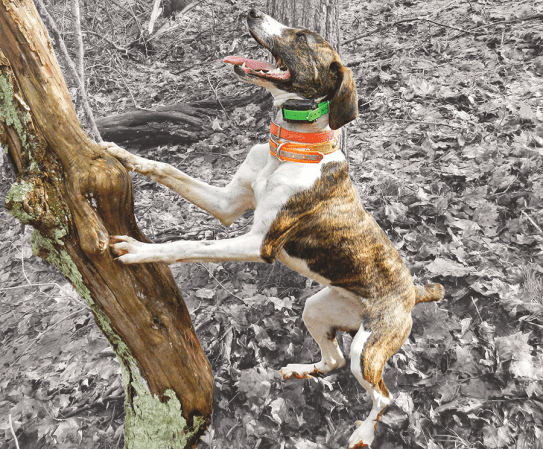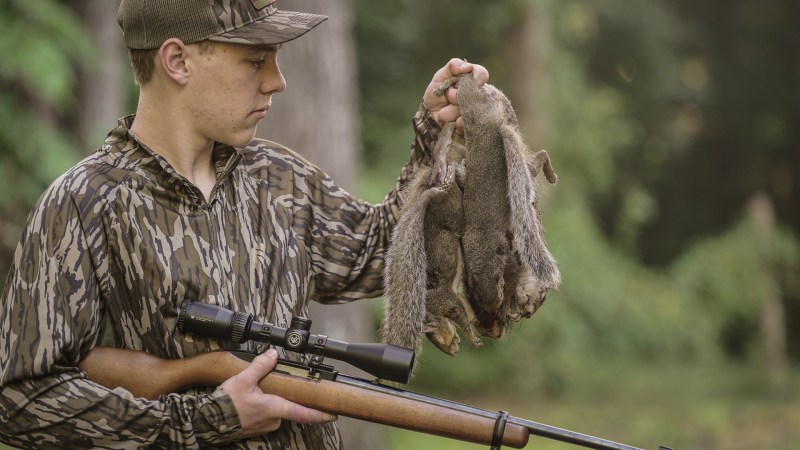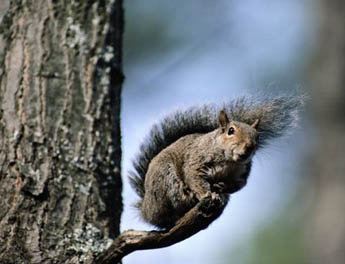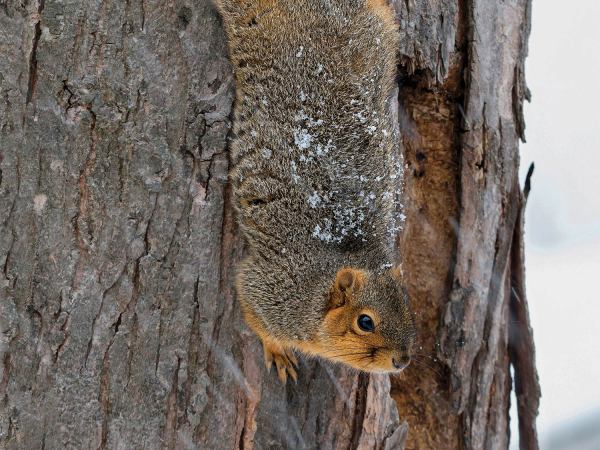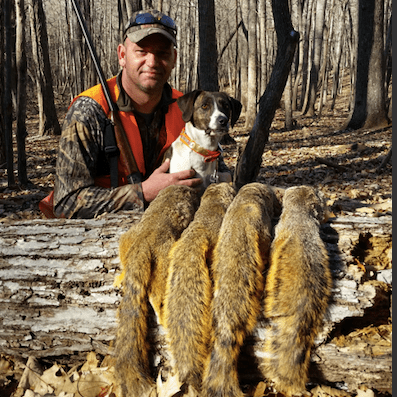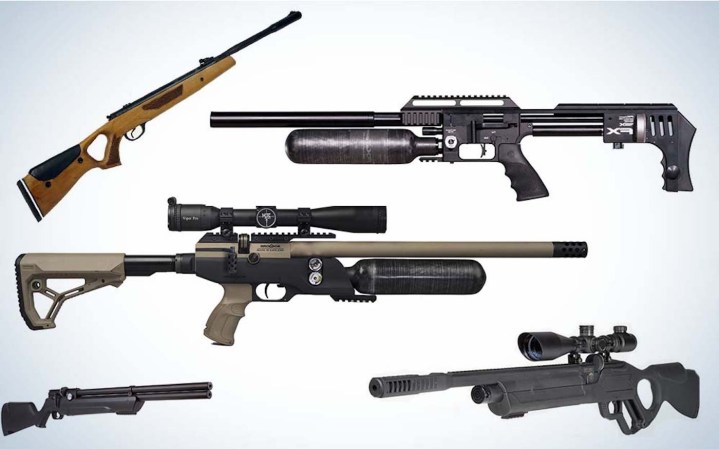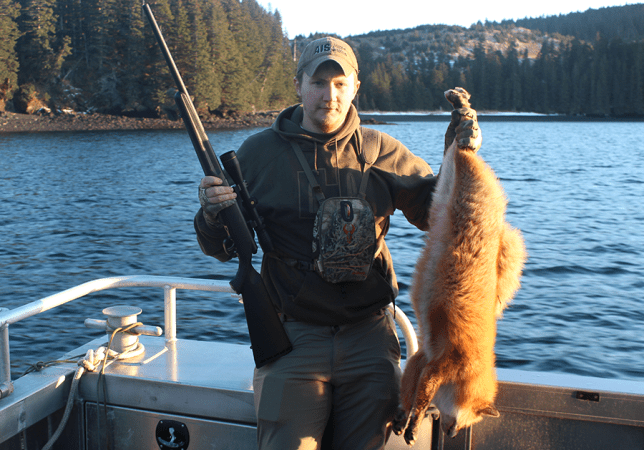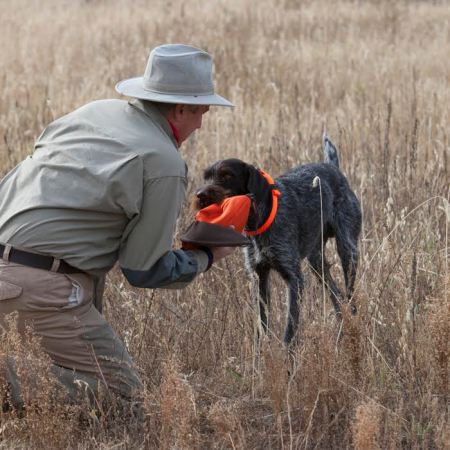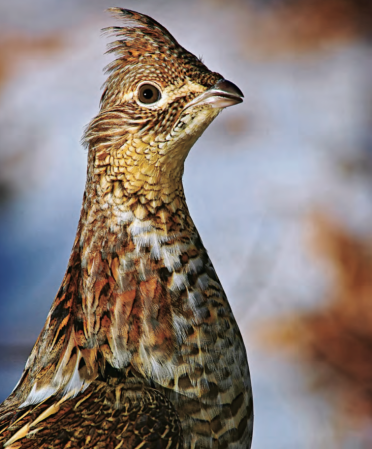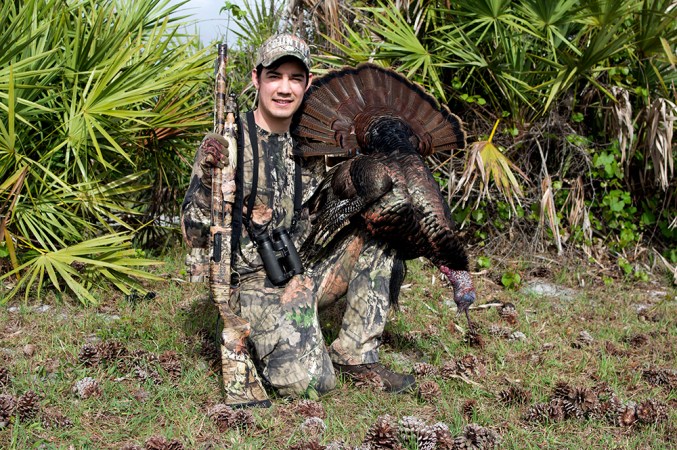We may earn revenue from the products available on this page and participate in affiliate programs. Learn More ›
One of the most hotly-debated topics in squirrel hunting—besides the dog you choose to hunt behind—is the kind of gun you use to pursue foxtails and grays. Some hunters love the .22 LR, .17 HMR, and even the heavy-duty .22 WMR Mag. Others stick to shotguns, from .410 on up to 12-gauge.
But what firearm—rimfire or shotgun—is best for killing squirrels? Well, that depends on how you hunt them. Different times of the year call for different tactics, and I would argue that there’s no single rimfire or shotgun that’s best for all scenarios. After spending a few days at Field & Stream hunting editor Will Brantley’s Kentucky squirrel camp with a bunch of rimfire-loving rednecks (I use that term as a compliment) I learned that each firearm has its advantages and limitations.
Rimfires Can Reach Out
There’s no debating that a rimfire rifle can shoot farther and more accurately than a shotgun. In the early season, when squirrels are in the treetops feasting on hickory nuts, a shotgun is a pretty worthless tool.
Before the nuts fall from the trees, squirrels don’t have much cause to spend time on the ground, and so they stay in the safety of the leafy canopy, cutting on nuts. Picking squirrels out of the canopy with a rimfire is some of the most challenging shooting you can do, as I found out hunting with Brantley.
We were shooting CCI .17 HMR, .22 WMR, and .22 LR, all highly-capable rounds in the hands of someone like Brantley, who has been hunting squirrels with a rimfire all his life. Me, not so much. With any kind of rifle shooting, you have to be steady before pulling the trigger. That’s tough to do when squirrels are jumping trees, and you’re trying to find your own tree trunk to lean against in order to keep the rifle still.
Shooting a rimfire accurately is a necessity for having early-season success, particularly if the stand of timber you’re hunting has massively tall trees. But becoming accurate with a .22 at distances of 75 yards (and beyond) is a challenge in itself. Anyone who has never done it before and thinks they can walk into the public woods and kill a limit of squirrels with a rifle is in for disappointment. I was surprised how difficult it was.
Rimfire’s Are Harder to Shoot
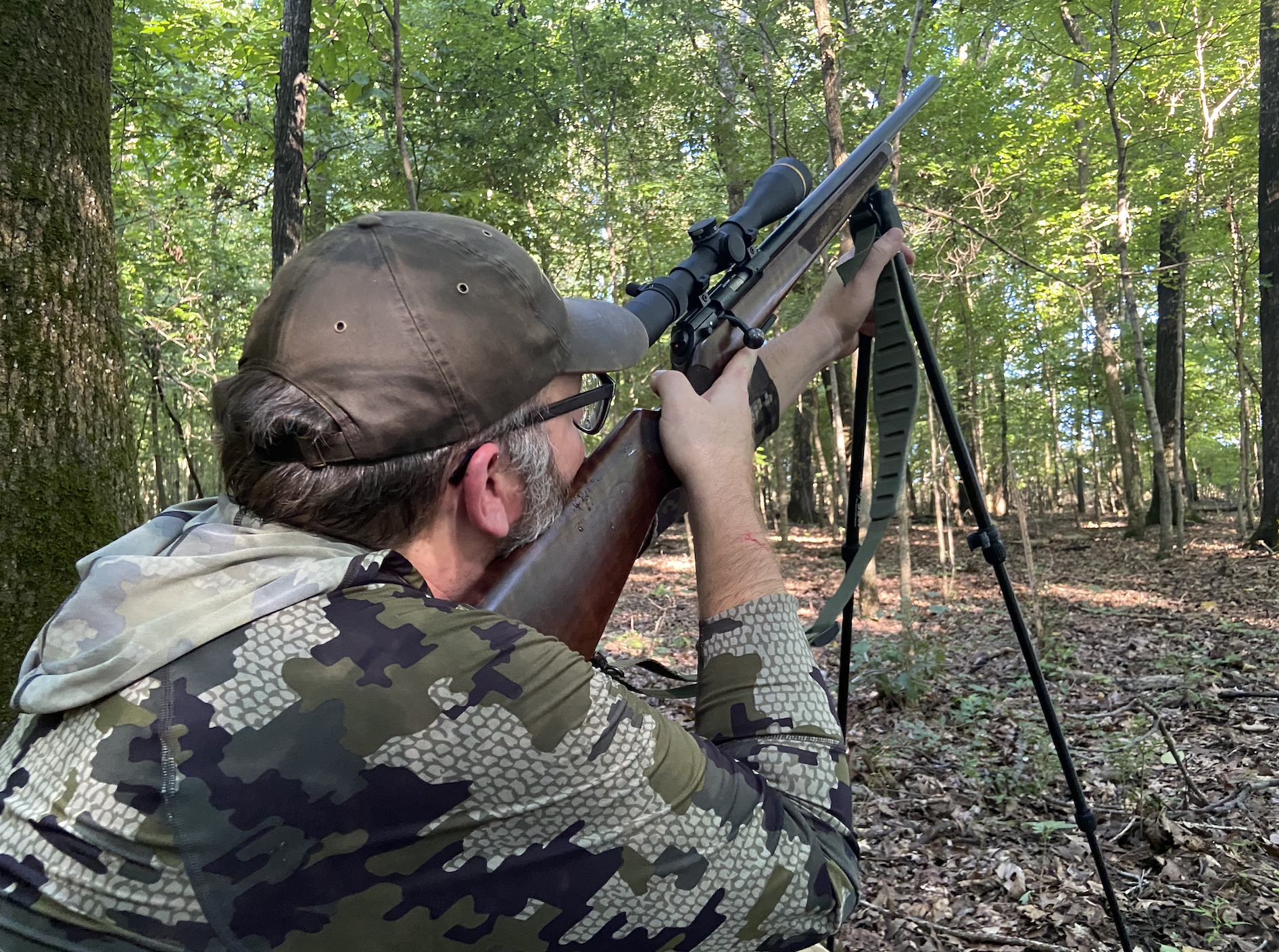
If you’re shooting a rimfire, many loads will destroy the meat (the .22 LR doesn’t hammer them too badly) if you body shoot squirrels, so you will need to head-tap them. That means you’re trying to hit a target about the size of a walnut at 50-plus yards. That’s a hard shot, even if you find a good rest.
It’s tough to even locate squirrels in a tree this time of year and finding a solid rest is difficult too. Once you locate a squirrel, you will likely have to circle to another tree to find a clear shot.
While you’re circling, you have to keep an eye on the tree the squirrel is in so you can track its movements. Move cautiously so you don’t get seen by the squirrel(s), and then find a tree that allows for a clear shot, all while sweating your ass off.
It’s pretty obvious why squirrel hunting was seen as the ideal first hunt. It teaches you how to locate game—by listening to the squirrels cutting and visually finding them in the tree—stalk critters, exercise patience, and shoot with precision. It’s a shame that so many folks skip squirrel hunting these days and move right on to deer or other big game.
Shotguns Are Best for Dog Work

Shotguns really shine if you have a treeing squirrel dog. Whenever I’ve hunted over my pup, there’s never been a time that I thought a rimfire would serve me better than a 20-gauge.
Since I am hunting mainly from October when the leaves are falling, to February, when the trees are bare, and the acorns are on the ground, my dog is running squirrels up a tree at close range. I need to get off a quick snap shot with my auto-loader to have the best chance at killing the squirrel.
Ideally, you want to shoot him before he scampers too far up the tree and out of range of the shotgun. Some hunters like to hunt over dogs with a rimfire. The let the squirrel get to the top of the tree and then pick him off. I’ve spent my hunting career mostly chasing waterfowl and game birds, and I’m comfortable swinging a shotgun on a moving target. I don’t want to wait till the squirrel gets to the top of the tree. I want my dog to sniff out the squirrel, tree it, and then I drop him with my shotgun as soon as I can, so we can move on to the next rodent.
I get that some dogs will range out far away from their handler, and by the time you get to that barking dog, you need a rimfire. But if you hunt over a close-working dog like I do, a shotgun is your best bet.
READ NEXT: Squirrel Hunting Tips and Tactics
Shotguns Are Also Best for New Hunters

Most new hunters are going to find more success waiting for squirrels to get within shotgun range. No matter what time of year you are hunting squirrels, shooting a rimfire accurately is going to be more difficult. A shotgun’s pattern spreads wider, and the shooter doesn’t have to remain as steady.
For brand-new hunters, a scoped .410, 28- or 20-gauge are all great options in the early season. Squirrels will often pause on a limb to cut nuts or just lay flat on a branch to rest. These are great chances for a hunter, who is just learning, to kill a squirrel if they are low enough in the tree. I would recommend removing the scope as the squirrel’s transition to foraging for nuts on the ground. They will be moving on the forest floor quite a bit more, and shooting with a scope will be difficult.
Small Wood Lots Are Shotgun-Friendly
A small patch of woods that cuts into an agriculture field or on the banks of a lake are ideal for shotgun work. The squirrels won’t be on the move as much, because they simply don’t have that many trees to jump to. And, if you spook them, and they come scurrying down a tree, that’s a great chance to shoot one. Also, they may just be running on the ground, traveling from tree to tree, and having a shotgun handy will make it far easier to hit a moving target than if you were shooting a scoped rimfire.
Read Next: A Good Squirrel Hunt Will Prepare You for a Lifetime of Bigger Game
Ammo Performance

If you are shooting a rimfire, your bullet is going to be moving significantly faster than a shotshell, and it can do some real damage to the squirrel upon impact. I shot CCI .22 WMR first during the hunt with Brantley, and it blew out shoulders and hind quarters with body shots. The .17 HMR caused similar damage, which is why, if you want to salvage as much meat as possible, you must connect on a headshot.
The CCI .22 LR “Stangers” didn’t cause near the body damage as the .22 WMR or 17 HMR, but I body shot nearly all my squirrels with it and there was still some meat loss. I know that most hunters probably don’t think losing a squirrel shoulder is anything to fuss over, but we are out here to fill the freezer, so you should make every effort to cleanly kill your critters and salvage as much meat as possible.
For shotguns, the more you increase payload, the more shot your gun sends in the direction of a squirrel. If you want to challenge yourself, a .410 is the way to go because it throws the smallest shot pattern. I like using a 28- or 20-gauge, because they are lighter to carry than a 12, and at the ranges I am shooting the extra payload capacity you can get from a 12-gauge shell isn’t necessary. Just about any lead small game load will work shotgun hunting squirrels. I will shoot No. 6 shot on up to No. 9 shot. Some of the public lands I hunt are near waterfowl management areas and so I must use non-toxic shot. I typically go with an affordable steal No. 6 load, like Federal Speed-Shok or Hevi-Teal, because they offer better pattern density.
Before you go on your next squirrel hunt consider how you will be hunting them. If long shots are required, a rimfire is your go-to gun. If it’s later in the season and squirrels are on the ground or you’re hunting behind a good dog, a shotgun is the right choice.


